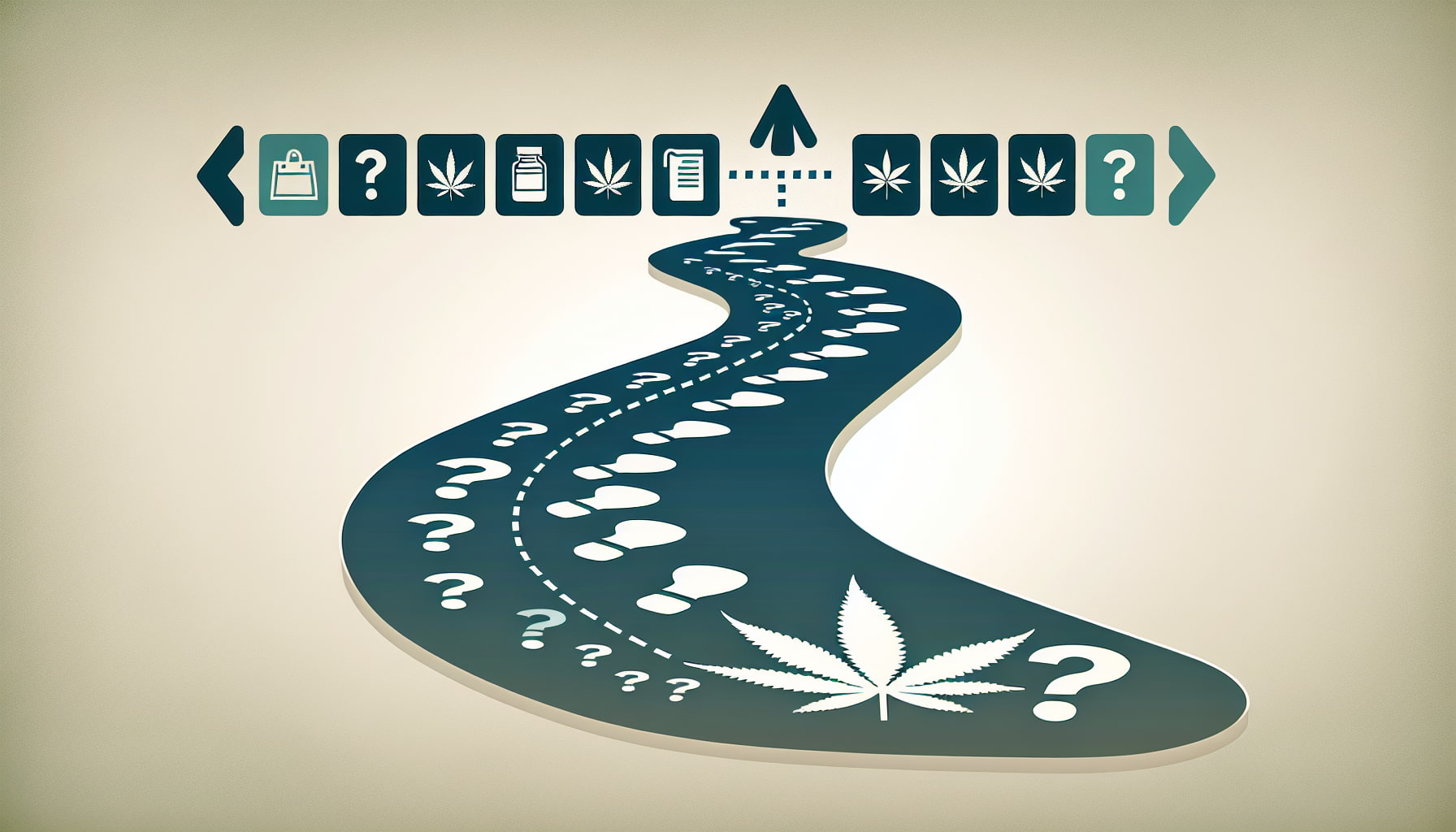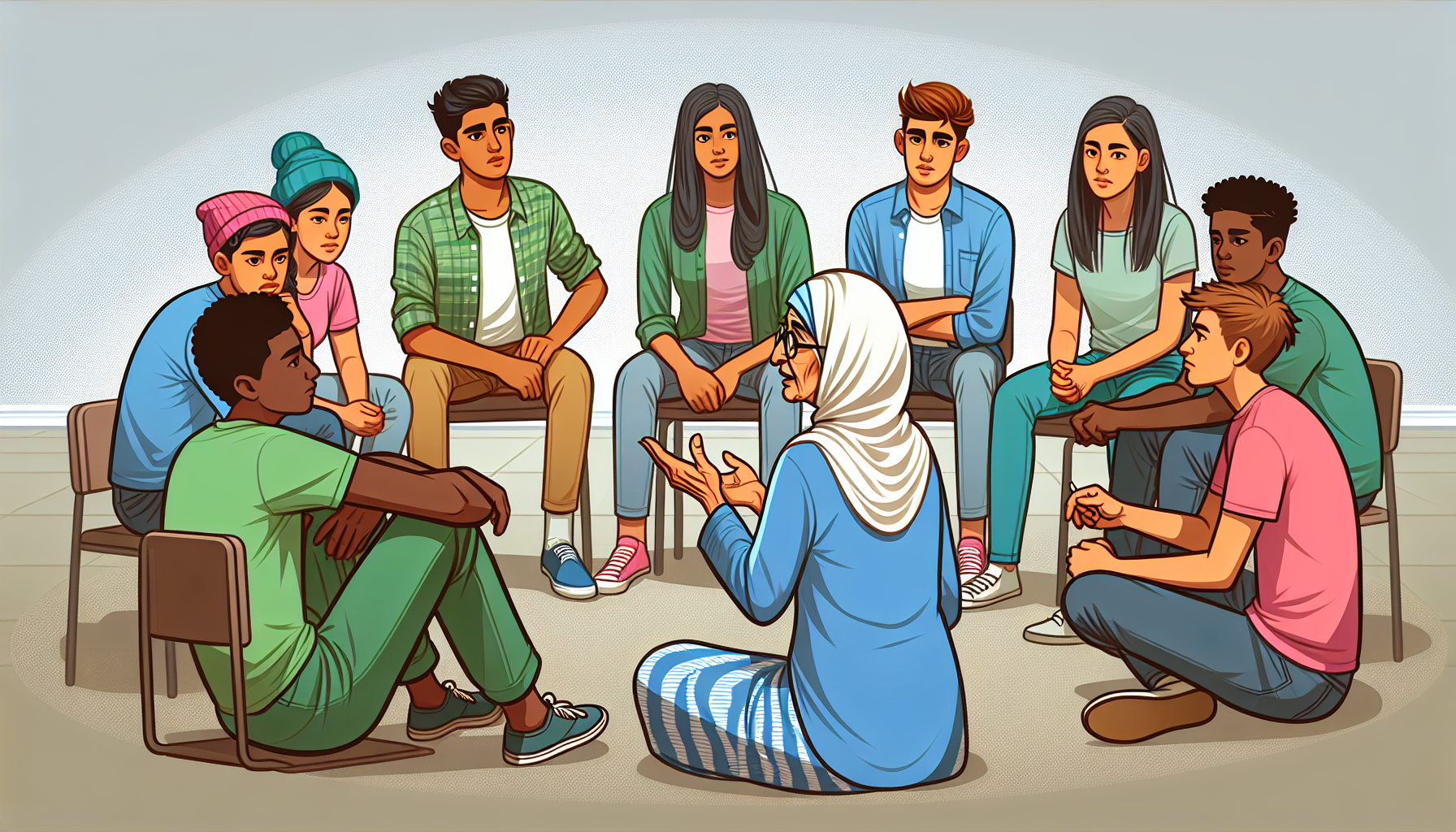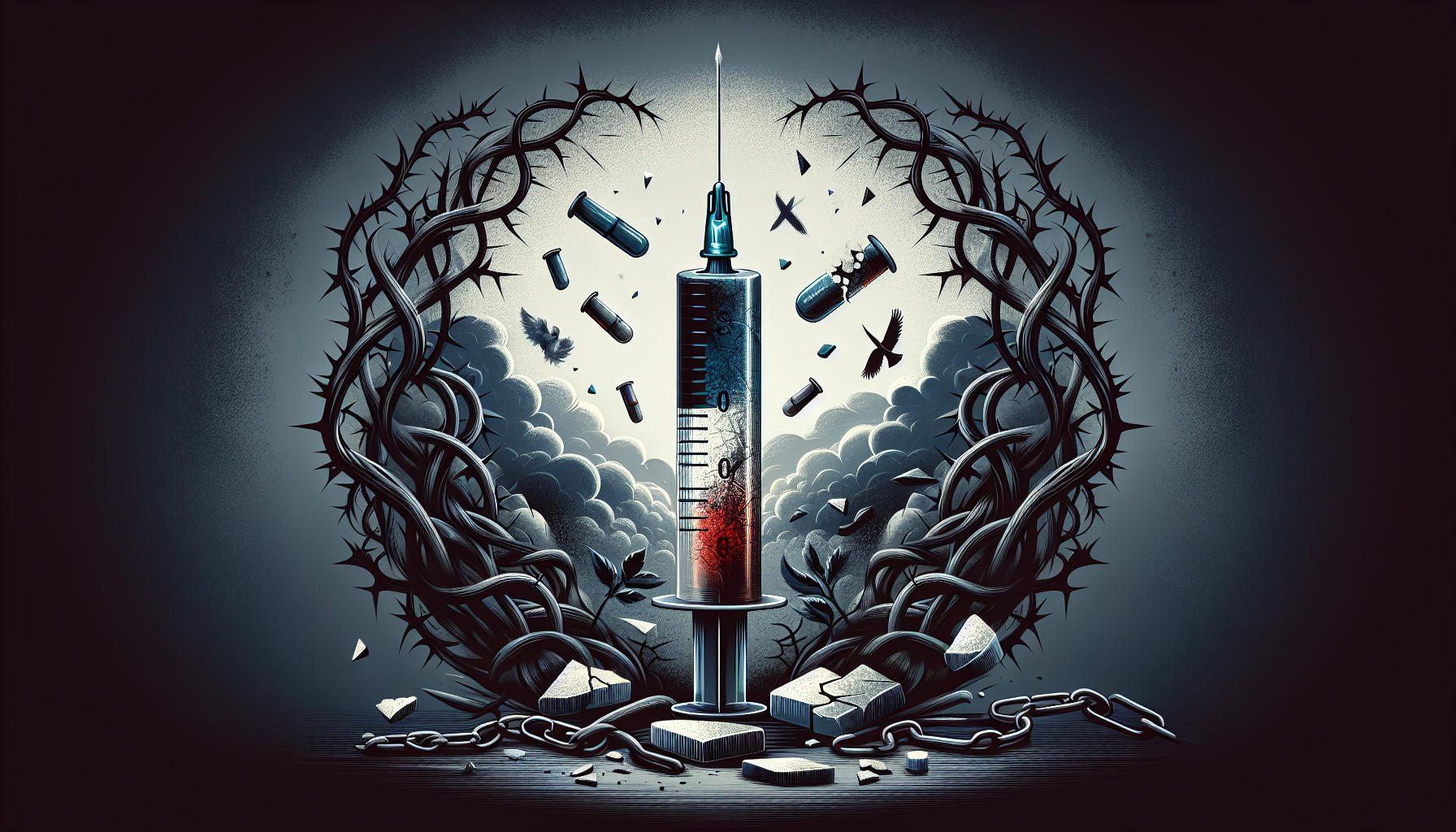September 1, 2024
How Teen Marijuana Use Fuels Illicit Drug Addiction
Discover how marijuana use in teens fuels illicit drug use and learn ways to break the cycle of addiction.

A Gateway to Illicit Drug Addiction
Research indicates a strong connection between marijuana use in teens and the development of illicit drug addiction. Engaging in marijuana use at an early age can increase the likelihood of experimenting with more dangerous substances later on. This phenomenon is often referred to as the "gateway theory," suggesting that initial exposure to marijuana may lead to the use of harder drugs.
Several studies have shown that teens who use marijuana are more likely to try other illicit drugs.
Age Group & Percentage of Marijuana Users Who Progress to Other Drugs:
- 12-14 years: 15%
- 15-17 years: 30%
- 18-20 years: 45%
The statistics highlight the importance of addressing marijuana use among teens as a crucial step in preventing future drug addiction. It's essential for parents and guardians to discuss drugs with your kids without sharing your past to establish a foundation for open communication.
The Impact of Early Marijuana Use on Future Drug Behavior
The age at which teens first experiment with marijuana can significantly impact their future drug behavior. Early exposure can alter brain development, affecting decision-making and impulse control. This can lead to risky behaviors, including the use of illicit drugs.
Research has found that teens who begin using marijuana before the age of 15 are more likely to develop substance use disorders compared to those who start later. The table below summarizes the correlation between early marijuana use and the likelihood of subsequent drug use:
- Before 15: High (70%)
- Ages 15-17: Moderate (40%)
- After 17: Low (20%)
Understanding these trends is vital for those seeking to quit their addiction. Recognizing that early marijuana use can lead to more severe issues may motivate individuals to seek help and take proactive steps toward recovery. Support systems and community resources are available, and individuals should explore ways to be supportive of recovery as part of their journey.
Risk Factors and Influences
Understanding the factors that contribute to marijuana use in teens fuels illicit drug use is essential for addressing the issue effectively. Several influences play a significant role, including peer pressure, mental health challenges, and a lack of education.
Peer Pressure and Social Environment
Peer pressure is a powerful force in adolescence. Teens often feel the need to fit in with their friends or social groups, which can lead them to try marijuana or other drugs. The desire for acceptance can overshadow their judgment about the risks involved. A supportive social environment can help mitigate these influences.
FactorInfluence on Marijuana UseStrong Peer PressureIncreases likelihood of trying drugsSupportive FriendshipsReduces chances of drug useSocial IsolationMay lead to seeking drugs for acceptance
Mental Health and Coping Mechanisms
Many teens who use marijuana may be struggling with underlying mental health issues such as anxiety or depression. They might turn to substances as a way to cope with their feelings. This reliance on marijuana can lead to a cycle of increased usage and dependence on other illicit drugs. It is crucial to address mental health openly and provide resources for those in need.
Mental Health Issue & Potential Impact:
- Anxiety: Increased likelihood of substance use.
- Depression: Higher risk for addiction.
- Stress: May lead to self-medication with drugs.
Lack of Education and Awareness
A lack of knowledge about the risks associated with marijuana use can contribute to its prevalence among teens. Many young people may not fully understand how marijuana can affect their brain development or lead to future substance use. Education programs aimed at increasing awareness can be beneficial in preventing early drug use.
Educational Factor & Effect on Marijuana Use:
- Limited Awareness: Higher rates of use.
- Comprehensive Education: Reduces risky behaviors.
- Parental Guidance: Encourages open discussions about drugs.
For those looking to support teens in avoiding drug use, resources like talk. they hear you. can provide valuable information and strategies. Building awareness around these risk factors can help empower teens to make healthier choices.
Addressing Teen Marijuana Use
Addressing the issue of marijuana use among teens requires a multifaceted approach. Effective strategies include prevention programs, early intervention, and seeking professional help when necessary.
Prevention Strategies and Education Programs
Prevention is key in reducing marijuana use in teens and its potential link to illicit drug addiction. Educational programs aimed at teens can provide essential information about the risks associated with marijuana use. These programs should focus on:
- The effects of marijuana on the developing brain
- The connection between teen marijuana use and future substance abuse
- Strategies for resisting peer pressure
Implementing community-based prevention initiatives can also be beneficial. Studies indicate that comprehensive prevention programs can significantly reduce substance abuse among youth.
Program Type:
- School-Based Programs: Educate students about drug risks.
- Community Initiatives: Engage youth in positive activities.
- Family Involvement: Encourage open discussions about drugs.
For more details on how community initiatives can help, see our article on community prevention programs cut teen prescription abuse.
Early Intervention and Support Systems
Early intervention is crucial for teens showing signs of marijuana use. Identifying at-risk individuals and providing timely support can prevent further escalation into illicit drug use. Support systems may include:
- School counselors who can provide guidance
- Peer support groups that offer a safe space for sharing experiences
- Family-based interventions that involve parents in the recovery process
Creating a supportive network around the teen can significantly impact their ability to resist drug use. Programs that emphasize family communication can help strengthen bonds and encourage healthier choices.
Seeking Professional Help and Treatment Options
When marijuana use becomes problematic, seeking professional help is essential. Treatment options vary based on individual needs and may include:
- Counseling or therapy focused on substance use
- Support groups for teens struggling with addiction
- Rehabilitation programs tailored for young people
Professional help can provide the tools necessary for recovery and help teens develop coping strategies to deal with stress and peer pressure. Resources for support can be found in local community centers or through school programs. For guidance on how to support someone in recovery, refer to our article on ways to be supportive of recovery.
Addressing marijuana use in teens is a critical step in preventing the progression to illicit drug use. By implementing effective prevention strategies, encouraging early intervention, and seeking professional help, communities can work together to support teens in making healthier choices.
Support for Teens Struggling with Marijuana Use
Supporting teens who are grappling with marijuana use is crucial in addressing the broader issue of how marijuana use in teens fuels illicit drug use. Building strong relationships, encouraging healthy habits, and creating a supportive environment can make a significant difference.
Building Strong Relationships and Communication
Open and honest communication is fundamental in establishing trust between teens and their support systems. Parents, guardians, and mentors should create an environment where teens feel safe discussing their feelings and experiences without fear of judgment. Here are some effective strategies for fostering these relationships:
- Active Listening: Pay close attention to what the teen is saying to show that their thoughts and feelings are valued.
- Open-Ended Questions: Encourage deeper conversations by asking questions that cannot be answered with a simple 'yes' or 'no'.
- Regular Check-Ins: Make it a habit to check in regularly, showing genuine interest in their daily lives.
Creating a safe space for dialogue can help teens express their struggles and seek guidance. For more tips on how to have these important discussions, refer to discuss drugs with your kids without sharing your past.
Encouraging Healthy Habits and Activities
Promoting healthy behaviors and activities can divert attention from drug use and provide teens with positive outlets for their energy. Engaging in sports, arts, or community service can lead to a fulfilling lifestyle. Here are some healthy habits to encourage:
- Regular Exercise: Reduces stress and improves mood, which can help combat cravings.
- Creative Outlets: Activities like drawing or playing an instrument can serve as emotional release.
- Volunteering: Builds self-esteem and connects teens with positive role models.
Encouraging participation in community events can also help teens build a network of supportive peers. Community prevention programs have proven effective, as seen in the article on community prevention programs cut teen prescription abuse.
Creating a Safe and Supportive Environment
A stable and nurturing environment is essential for helping teens navigate their challenges. This includes both physical safety and emotional support. Here are some important aspects to consider:
- Consistent Routines: Structure can provide a sense of security and predictability.
- Positive Reinforcement: Acknowledge and celebrate small achievements to build confidence.
- Access to Resources: Ensure that teens have access to counseling, support groups, and educational materials regarding substance use.
Creating an atmosphere where teens feel valued and supported can lead to better outcomes as they seek to overcome their challenges. For further insights into supporting recovery, check out ways to be supportive of recovery.
Breaking the Cycle of Addiction
Addressing the issue of marijuana use in teens fuels illicit drug use requires a comprehensive approach. This includes recovery resources, long-term strategies for maintaining sobriety, and empowering teens to make positive choices.
Recovery and Rehabilitation Resources
Access to effective recovery and rehabilitation resources is crucial for teens struggling with substance use. Various programs and facilities cater to young individuals, offering a safe environment for healing. These resources can include:
- Outpatient Programs: Provide therapy and support while allowing teens to live at home.
- Inpatient Rehabilitation: Intensive care where teens stay at a facility for a specified period.
- Support Groups: Peer-led groups that offer shared experiences and encouragement.
- Counseling Services: Professional guidance to address underlying issues related to addiction.
Teens can find support through local community resources or organizations dedicated to addiction recovery. For more information on recovery strategies, visit talk. they hear you..
Long-Term Strategies for Maintaining Sobriety
Once teens begin their recovery journey, it's essential to implement long-term strategies to maintain sobriety. Some effective strategies include:
- Regular Check-Ins: Ongoing meetings with counselors or support groups to monitor progress.
- Healthy Lifestyle Choices: Engaging in regular physical activity and balanced nutrition to promote overall well-being.
- Building a Support Network: Surrounding oneself with positive influences and friends who support sobriety.
- Setting Goals: Establishing personal goals to create a sense of purpose and achievement.
These strategies help reinforce positive behavior and provide a foundation for lasting change. For more details on how to support a loved one's recovery, check out ways to be supportive of recovery.
Empowering Teens to Make Positive Choices
Empowering teens to make informed choices is a vital part of breaking the cycle of addiction. This involves equipping them with knowledge and skills to resist peer pressure and avoid substance use. Some key approaches to empowerment include:
- Education Programs: Informative sessions on the risks of substance use and the impact of addiction.
- Skill-Building Workshops: Training on decision-making and coping strategies for handling peer pressure.
- Open Communication: Encouraging discussions about feelings, challenges, and the consequences of drug use.
- Positive Role Models: Introducing teens to mentors who exemplify healthy choices and lifestyles.
By focusing on these approaches, teens can gain the confidence to make choices that promote their well-being and future success. For further guidance on discussing drugs with teens, refer to our article on discuss drugs with your kids without sharing your past.

.jpg)




.jpg)

